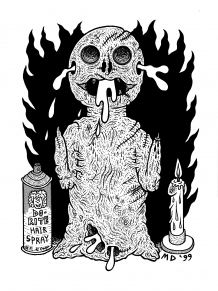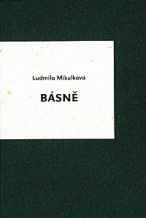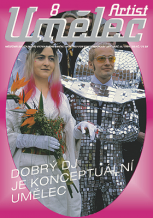| Umělec magazine 1998/3 >> Glass Used in Shop Windows/Commodities in Shop Windows | List of all editions. | ||||||||||||
|
|||||||||||||
Glass Used in Shop Windows/Commodities in Shop WindowsUmělec magazine 1998/301.03.1998 Dan Graham | artist | en cs |
|||||||||||||
|
"The glass used for the show-case displaying products isolates the consumer from the product at the same time as it superimposes the mirror-reflection of his own image onto the goods displayed. This alienation, paradoxically, helps arouse the desire to possess the commodity. The goods are often displayed as part of a human mannequin - an idealized image of the consumer. Glass isolates (draws attention to) the product’s surface appeal, “glamour”, or superficial appearance alone (attributes of “workmanship” which link craftsman to specific product being lost) while denying access to what is tangible or immediately useful. It idealizes the product. Historically this change in the appearance of the product corresponds to the workers’ alienation from the products they produce; to be utilized the product must be brought on the market in exchange for wages at a market value with the conditions of its production obscured. Glass is helpful in socially alienating buyer from producer, thereby concealing the product’s connection to another’s real labor and allowing it to acquire exchange value over and above use value.
Under capitalism, just as the projected ego is confused with the body image in the mirror, so that ego is confused with the commodity. The individual is made to identify himself (in his “feeling for himself”) with the image of the commodity. The glass and mirrors of the shop-window beckon the potential customer by arousing doubts and desires about his self-image/self-identity. It is as if in looking at the product behind the glass showcase, the customer is looking at an ideal image of himself (in the mirror). Or he sees in the reflections that he deviates from the ideal (represented by the mannequin), but is given the possibility of acquiring attributes of this ideal if he buys the merchandise. The commodity reflects his desire for a more complete, “better” “self” identified with the alter ego. Inseparable from the goods the conumer desires is the illusion that buying them will “complete” that which is “incomplete” in himself. This desire is never satisfied (as the market system must continue to function), but because the consumer identifies himself with (his projection into) the commodity, he infuses the commodity with a psychological value which now becomes part of its market value. The video piece is located in a modern shopping arcade. It utilizes two of the shop window showcases which display their standard goods and which are opposite each other. Each showcase has a mirror fixed on the back wall, parallel to the window. Shoppers, looking through the window can see all of the following: the images of the showcase’s merchandise reflected in the mirror, and at the same time they see the image of the other side of the arcade with the merchandise in the opposite showcase; they see the reflections of the outside of the window surface, and the mirror’s reflection of those on the inside surface, as well as those on the exterior surface of the opposite window; and they see the other shoppers who look into these windows or who pass through the arcade between them. Both shop windows have television monitors located front and center at eye level. One monitor faces the window, and the other faces the mirror. Each monitor has a video camera resting upon its top surface. The camera lens on the right faces the mirror; and the camera lens on the left faces the window. The view from the camera on the right is transmitted live to the monitor on the left; but the view from the left camera is transmitted 5 seconds delayed to the right monitor.. (This article originally appeared in Theories and Documents of Contemporary Art, University of California Press, 1996, pp. 833-835). "
01.03.1998
Recommended articles
|
|||||||||||||
|
04.02.2020 10:17
Letošní 50. ročník Art Basel přilákal celkem 93 000 návštěvníků a sběratelů z 80 zemí světa. 290 prémiových galerií představilo umělecká díla od počátku 20. století až po současnost. Hlavní sektor přehlídky, tradičně v prvním patře výstavního prostoru, představil 232 předních galerií z celého světa nabízející umění nejvyšší kvality. Veletrh ukázal vzestupný trend prodeje prostřednictvím galerií jak soukromým sbírkám, tak i institucím. Kromě hlavního veletrhu stály za návštěvu i ty přidružené: Volta, Liste a Photo Basel, k tomu doprovodné programy a výstavy v místních institucích, které kvalitou daleko přesahují hranice města tj. Kunsthalle Basel, Kunstmuseum, Tinguely muzeum nebo Fondation Beyeler.
|






























 New book by I.M.Jirous in English at our online bookshop.
New book by I.M.Jirous in English at our online bookshop.
Comments
There are currently no comments.Add new comment